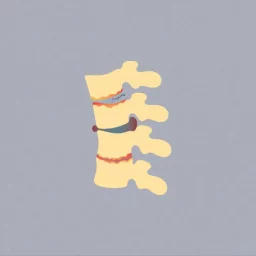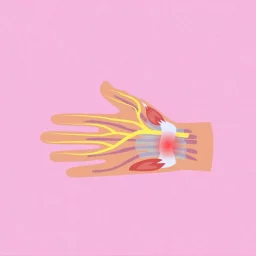Physiotherapy Insights on the Secret to a Stronger Core:
A strong core plays a crucial role in preventing back pain by providing stability, support, and proper alignment for the spine. Here are the physiotherapist’s insights and secrets on how strengthening your core will help prevent back pain:
Improving your Posture:
Your core muscles help maintain proper posture by supporting your spine and pelvis. A strong core allows you to sit, stand, and move with optimal alignment, reducing the strain on your muscles and ligaments in your back.
Spinal Stability:
The core muscles, including the transverse abdominus and multifidus, act as natural stabilizers for the spine. They help you to control movement and prevent excessive twisting, bending, and flexion. In turn, they help prevent excessive strain on your spinal joints that leads to pain or injury.
Load Distribution:
A strong core helps evenly distribute the load and pressure placed on the spine. For example, excessive strain can be placed on the spine during everyday activities, such as lifting, bending, and carrying heavy objects. Load distribution with a strong core reduces the risk of overloading specific areas of your spine and causing strain or injury.
Shock Absorption:
Core strength contributes to better shock absorption. This is especially true during high-impact activities like running or jumping. Strong core muscles help absorb and dissipate forces transmitted through your body. Shock absorption reduces the impact on your spine and minimizes the risk of injury.
Improved Movement Patterns:
A strong core promotes proper movement patterns and biomechanics, allowing you to move efficiently and effectively. Improving your core strength reduces the likelihood of developing imbalances or compensatory movements that can lead to back pain over time.
Prevention of Muscle Imbalances:
Weakness in the core muscles can lead to muscle imbalances, where certain muscles become overactive and others become underactive. Imbalances can alter your spinal alignment. Strengthening your core will help correct these imbalances and maintain a better muscular equilibrium.
Protection of Intervertebral Discs:
Strong core muscles help support the vertebrae and protect the intervertebral discs from excessive pressure or compression by compensation. This reduces the risk of disc herniation or bulging, which can cause nerve compression and result in back pain or sciatica.
Core strengthening exercises for physiotherapy:
By incorporating core-strengthening exercises into your fitness routine and focusing on maintaining good posture and alignment throughout the day, you can help prevent back pain and maintain a healthy, resilient spine. Building a strong core involves a combination of exercises that target the muscles in your abdomen, pelvis, lower back, and hips.
Here’s a Physiotherapist’s guide to help you build a strong core:
- Include Core Exercises in Your Routine: Incorporate core-specific exercises into your workout routine at least 2-3 times per week. Focus on exercises that target different areas of the core, including the rectus abdominus, transverse abdominus, obliques, and lower back muscles.
- Perform Compound Movements: Many compound exercises, such as squats, deadlifts, and overhead presses, engage the core muscles as stabilizers. Including these exercises in your routine can help strengthen your core while also working other muscle groups.
- Practice Stability Exercises: Exercises that challenge your balance and stability, such as planks, side planks, and bird dogs, are excellent for strengthening the core muscles. Focus on maintaining proper form and engaging your core throughout the movement.
- Use a Variety of Exercises: Mix up your core exercises to target different muscle groups and prevent boredom. Include exercises that involve flexion (e.g., crunches), extension (e.g., back extensions), rotation (e.g., Russian twists), and anti-rotation (e.g., Pallof press).
Physiotherapy Tips for consistency in building a strong core:
- Engage Your Core During Daily Activities: Practice engaging your core muscles during daily activities, such as sitting, standing, and walking. Simply being mindful of your posture and actively engaging your core can help strengthen these muscles over time.
- Progress Gradually: Start with exercises that match your current fitness level and gradually increase the intensity, duration, and resistance as your core strength improves. This will help prevent injury and ensure steady progress.
- Focus on Quality Over Quantity: Pay attention to your form and technique during core exercises. Performing fewer repetitions with proper form is more effective than doing many repetitions with poor form. Quality always trumps quantity.
- Rest and Recovery: Allow your core muscles adequate time to rest and recover between workouts. Overtraining can lead to fatigue and an increased risk of injury. Aim for 1-2 days of rest between core workouts.
Remember that building a strong core takes time and consistency. Be patient and stay committed to your core training routine, and you’ll gradually see improvements in strength, stability, and overall fitness.
For more information or to book an appointment with one of our chiropractors, physiotherapists or massage therapists, visit our clinic websites at Curavita Byward and Curavita Glebe.
Byward Market
Email: info.byward@curavita.com
Glebe
Email: info.glebe@curavita.com
















